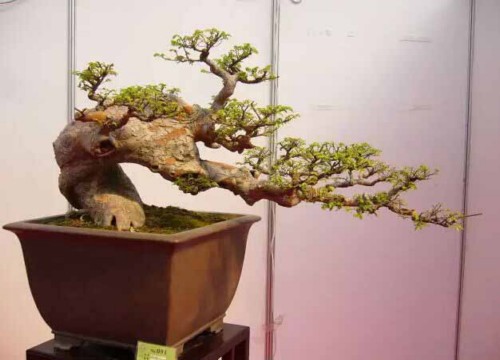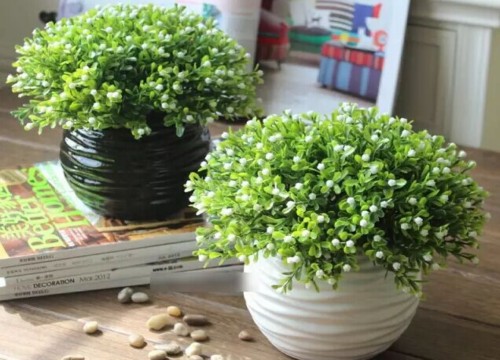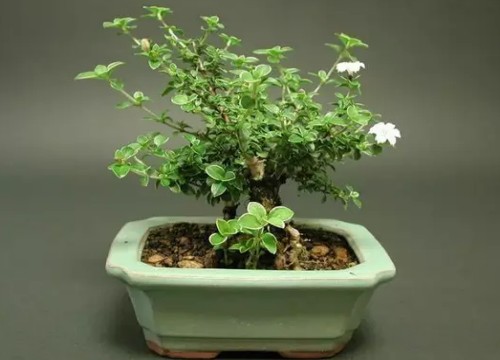Good bonsai works can better reflect the true meaning of life.
"small bridge and flowing water is oblique, and there is a family in the depths. The long way back to the woodcutter was late, and flowers fell inadvertently. " This is the artistic conception of bonsai art. I have lived in the city for a long time, and I often hear the roar of cars. I often see steel and concrete in front of my eyes, but I don't know that there are Taoyuan outside the world. In contemporary times, the appreciation of bonsai does not seem to be as deeply rooted in the hearts of the people as tea ceremony and incense. However, a beautiful bonsai work can better reflect the true meaning of life-"obey the nature of things, because things are natural, do not set up and do nothing."

Bonsai art has a long history.
China, known as the "mother of the world garden", is the founder of bonsai art.
"the origin of bonsai is very early in kind, about 7,000 years ago, on the fourth cultural level of the Hemudu site." Ao Yan, an associate professor at the School of History of Nankai University, said in an interview with reporters, "according to archaeological findings, two pieces of pottery are engraved with potted plants, one with five leaves, but we don't know exactly what kind of plant it is, while the other has three leaves. This is a carving on pottery, not a real thing, but it shows that potted plants have already appeared at that time. "
A mural from the Eastern Han Dynasty was unearthed in a Han tomb in Wangdu, Hebei Province. there are flowerpots with six safflower branches with curled edges, which are basically the same as our flowerpots today, with square seats under them, which shows that they have developed from potted plants to the ornamental use of edifying temperament at that time.
There are many potted plants in the paintings of the Song Dynasty. Ao Yan told the reporter that there are such records in Wang Shipeng's Yansong Ji in the Song Dynasty: "savages are from Yansong to Meixi, with heterogeneous clusters, rooted in fist stone, Mao is not alone, forest is not Qiao, cypress juniper body and pine atmosphere, hide the earth-shaking meaning in the Ying grip, but also the wonder of plants and trees."
During the Wanli period of the Ming Dynasty, Tu long's "Kao Pan Yu Shi" has a special section, called "potted play Paper", which is a systematic carding of potted plants. Coincidentally, Wen Zhenheng, a big contemporary player, has a special article in the Chronicles of long things, which also talks about bonsai.
Bonsai occasionally recorded during the Jiaqing period of the Qing Dynasty is a book dedicated to bonsai, which is respected by later generations.
Silent poetry, three-dimensional painting
Although the bonsai is small, it is a shrinking landscape and landscape, pursuing to reproduce the divine appearance of nature in a small basin. It is implied in the hilly forest spring, ingenuity, expressing people's yearning for the charm of nature. Because of this, bonsai is called "silent poetry, three-dimensional painting".
Chinese bonsai is mainly divided into tree bonsai, landscape bonsai, tree and stone bonsai and miniature bonsai.
Bonsai trees with woody plants as the main material, after pruning, banding, shaping and other artistic processing and careful cultivation, reproduce the natural plant landscape.
Time: 2019-05-23 Click:
- Prev

Principles to be followed in bonsai design
Some people say that the aesthetic characteristics of Chinese bonsai art are elegant and free from vulgarity, implicit and artistic conception, the combination of reality and reality, and the level and depth of field, so as to change from finite to infinite, from bounded to unbounded, fascinating, reverie, and so on. But if summed up more succinctly,
- Next

The Duality of Bonsai Art creation
We know that music and literature belong to time art, painting, sculpture and architecture belong to space art, while dance, drama, film and bonsai belong to time and space art. This means that bonsai works are not only spatial, but also temporal, and its landscape changes with the changes of spring, summer, autumn and winter.
Related
- Fuxing push coffee new agricultural production and marketing class: lack of small-scale processing plants
- Jujube rice field leisure farm deep ploughing Yilan for five years to create a space for organic food and play
- Nongyu Farm-A trial of organic papaya for brave women with advanced technology
- Four points for attention in the prevention and control of diseases and insect pests of edible fungi
- How to add nutrient solution to Edible Fungi
- Is there any good way to control edible fungus mites?
- Open Inoculation Technology of Edible Fungi
- Is there any clever way to use fertilizer for edible fungus in winter?
- What agents are used to kill the pathogens of edible fungi in the mushroom shed?
- Rapid drying of Edible Fungi

